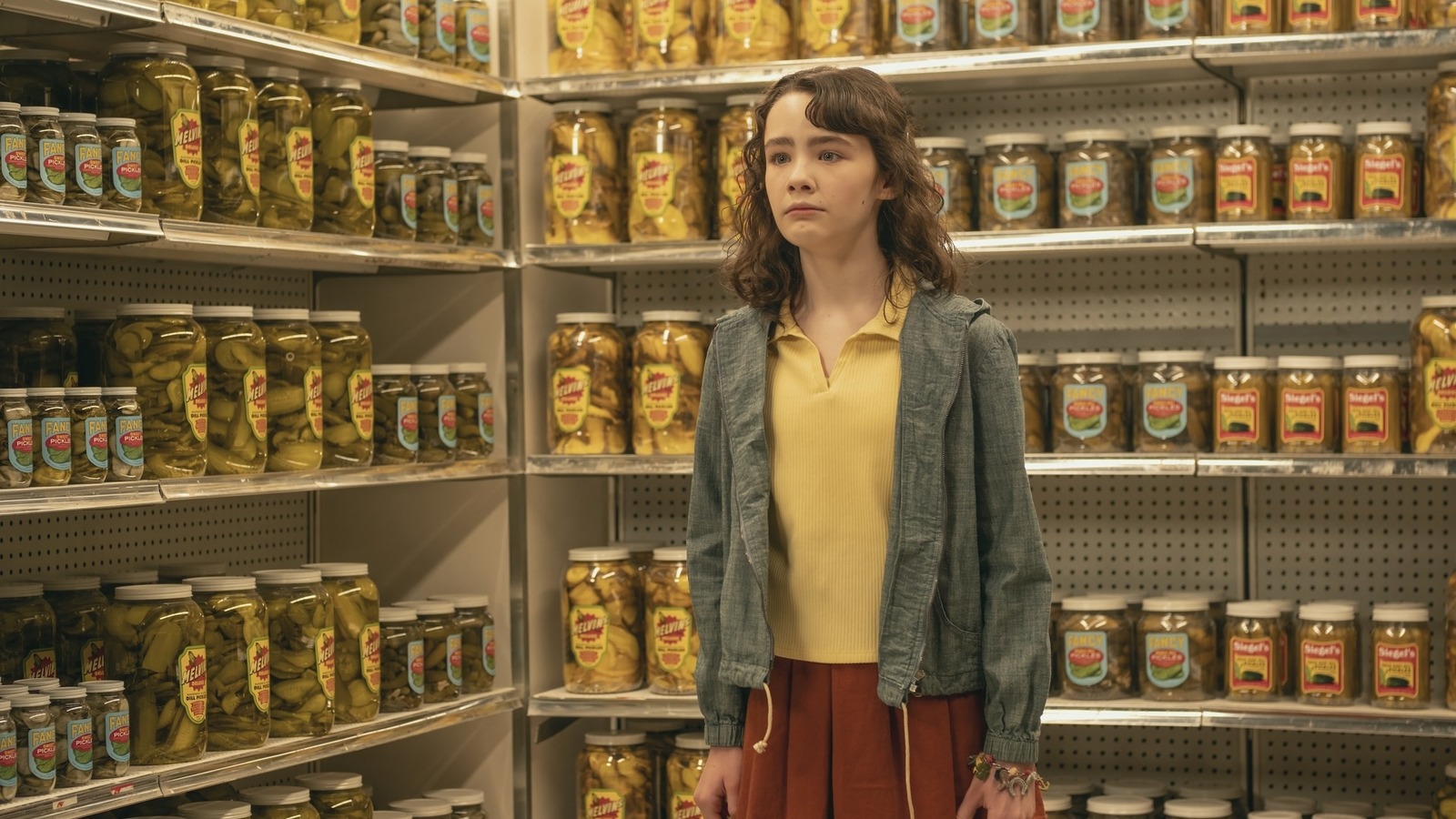“It: Welcome to Derry” is right here in all its gory glory, and the second episode has revealed the prequel present’s opening credit for the primary time. These credit are fairly memorable (though I’ve to admit I’ve a concern they had been created with the assistance of AI; I’ve reached out to a consultant to substantiate however to date have obtained no reply), resembling a collection of ghoulish postcards promoting the cursed city of Derry, Maine. Whereas the ominously cheerful music “A Smile and a Ribbon” performs, sung by Fifties sister act Endurance & Prudence, the “Welcome to Derry” credit affirm what we already know: issues ain’t proper in Derry.
The credit are additionally loaded with enjoyable little Easter egg callbacks to Stephen King’s authentic novel. King’s ebook is crammed with a collection of interludes, the place librarian and beginner historian Mike Hanlon recounts the lengthy, sordid historical past of Derry and divulges that the malevolent killer clown Pennywise has been round for hundreds of years in a single type or one other.
“It: Welcome to Derry” is drawing on a number of of those interludes for its story, so it is sensible that references to them would pop up within the opening credit. We see the Paul Bunyan statue that attacked Ritchie in “It: Chapter Two” (this additionally occurs within the ebook), and there is a second involving the spooky previous home on Neibolt Avenue, a spot the place Pennywise hangs out when he is not out and about consuming kids. However that is only the start.
The Bradley Gang bloodbath is referenced within the It: Welcome to Derry credit
The credit additionally embrace references that will likely be a bit extra obscure if you have not learn the ebook. One contains a group of individuals in an previous timey automobile being gunned down on the street by a horde of Derry residents — together with Pennywise himself, who’s hanging out a window and firing a machine gun. This can be a reference to the dying of the Bradley Gang, a gaggle of Bonnie and Clyde-like financial institution robbers from the Nice Despair period.
In King’s ebook, we study that in 1929 the Bradley Gang rolled into Derry to cover out from the legislation. When the nice folks of Derry discovered about this, they set an ambush, and seemingly the complete city took up arms and shot the gang to dying.
That is simply one of many some ways King highlights how Derry is a violent, murderous city underneath the sway of Pennywise. Pennywise additionally joins in on the enjoyable, taking pictures on the gang from varied places. This bloodbath additionally ties into the theme that Pennywise often requires a giant, grand sacrifice to satiate his starvation.
The Kitchener Ironworks explosion can also be referenced through the Welcome to Derry opening credit
The opposite large callback within the credit options the explosion of the Kitchener Ironworks. This tragedy is definitely briefly talked about within the first “It” film, the place Ben comes throughout information about it whereas doing analysis within the library. King’s novel, nevertheless, goes into much more element. We study there that in 1908, this manufacturing unit mysteriously exploded over Easter weekend whereas a gaggle of kids had been inside on an Easter egg hunt.
The reason for the explosion stays a thriller, and King writes that 102 folks had been killed (88 kids and 14 adults). The “Welcome to Derry” opening credit spotlight this occasion by together with kids each bloody and on hearth as they run from the constructing, in addition to one unfortunate individual in flames whereas sporting an Easter Bunny costume.
The creators of “Welcome to Derry” have charted out a three-season plan that can maintain leaping again in time to the varied years Pennywise surfaced and began wrecking havoc, so it is in all probability protected to imagine these occasions teased within the opening credit will likely be totally fleshed out sooner or later. They could even present up this season — solely Pennywise is aware of for certain. And, uh, the individuals who write the present.



